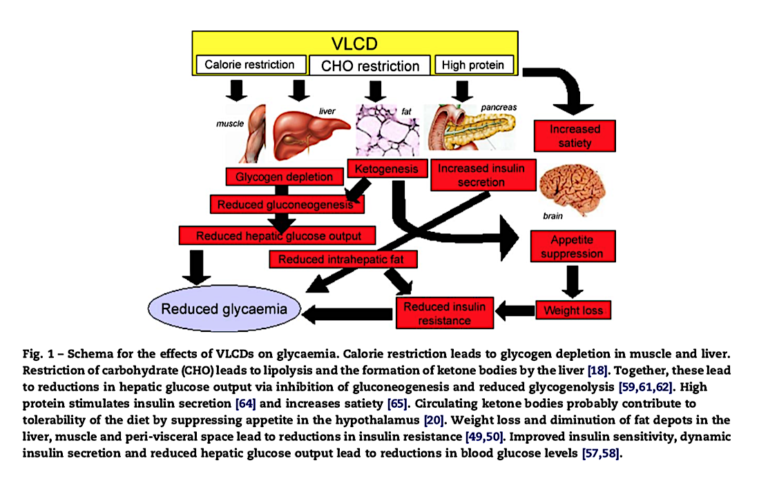This 2009 review briefly summarizes the potential impact of very low-calorie diets (VLCDs) on diabetic patients. VLCDs generally involve intake of 450 to 800 calories per day. The diets are often ketogenic in practice, due in no small part to the significant carbohydrate restriction required to meet caloric targets while maintaining sufficient protein and nutrient intake. While VLCDs historically have often introduced nutrient insufficiencies, modern dietary strategies and supplements have reduced the risk associated with VLCDs and increased the ease of adherence to such diets.
The authors note the limited body of evidence supporting VLCDs as a weight-loss intervention, particularly within diabetic populations. This literature deficit is why multiple groups (including the International Diabetes Federation and a Cochrane Review) produced statements recommending diabetics avoid using VLCDs. However, these cautionary recommendations fail to account for the potential of VLCDs to affect glycemic control independent of any effects on weight.
As summarized in Figure 1, VLCDs have been shown to have rapid and substantial beneficial effects on glycemia in diabetic subjects. A VLCD (which, as noted above, requires significant restriction of both calories and carbohydrates) will quickly deplete glycogen stores in both the liver and muscle, and subsequently induce ketosis. This reduces glucose production and secretion by the liver, lowering blood glucose levels. Over time, insulin resistance in the liver and muscles dissipates as the fat stores in these organs are reduced. The diet may also increase pancreatic insulin sensitivity through mechanisms related to and independent of ketosis. Finally, the ketogenic state improves satiety, which leads to greater dietary compliance.

At the time of this review’s publication, much of this research on VLCDs was preliminary; as other posts on CrossFit.com have shown, subsequent research has demonstrated substantial practical benefits from the use of VLCDs in diabetic subjects.
Editorial note on potential conflicts of interest: The senior author on this publication is Chair of the Medical Advisory Committee on Optifast, a company that produces shakes to be used in or as VLCDs.
Effects and Clinical Potential of Very-Low-Calorie Diets (VLCDs) in Type 2 Diabetes
3